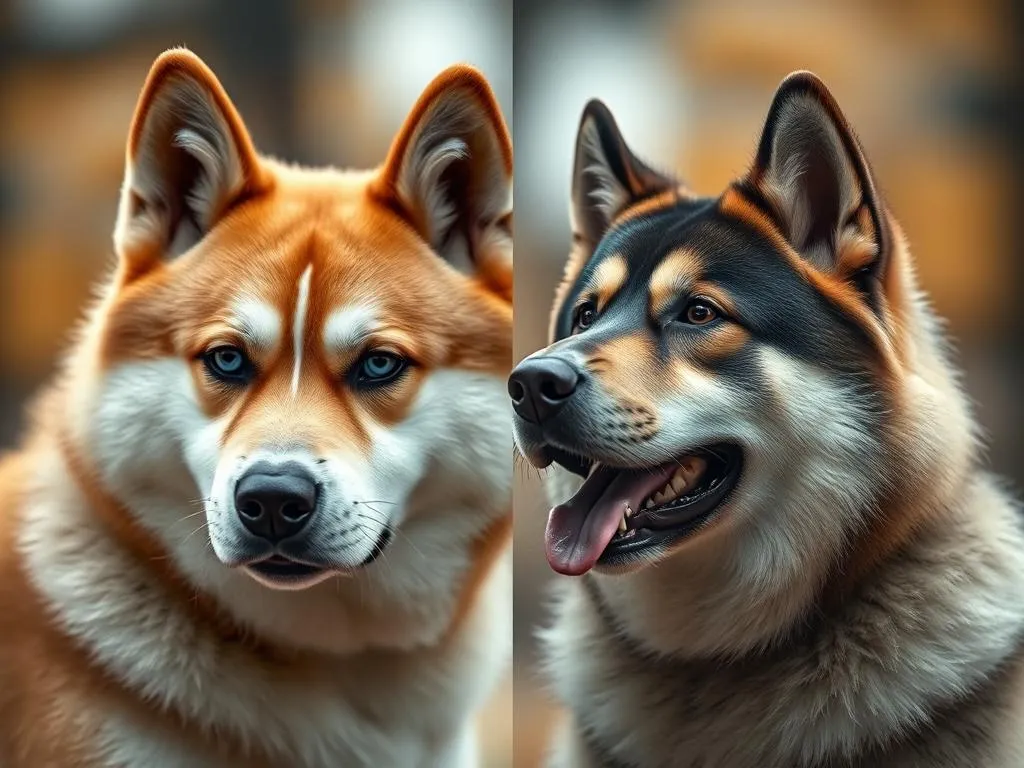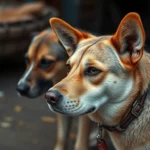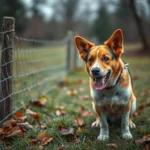
The Akita breed is renowned for its loyalty, intelligence, and striking appearance. However, potential dog owners often find themselves torn between the Japanese Akita Inu and the American Akita. Each variant possesses unique characteristics that cater to different lifestyles and personal preferences. Understanding these differences is crucial in making an informed decision that aligns with your living situation and family dynamics.
History of the Akita Breed
Origins of the Akita
The Akita breed traces its roots back to Japan, where it was originally bred for hunting large game such as deer and boar. The Akita became a symbol of health, happiness, and long life in Japanese culture. A significant figure in this history is Hachiko, an Akita known for his unwavering loyalty, which has made the breed even more revered in Japan. Over time, the breed became a beloved companion and protector, deeply embedded in Japanese tradition.
Development of the American Akita
The American Akita emerged when the breed was introduced to the United States after World War II. American breeders sought to enhance the dog’s size and strength, resulting in a more robust and imposing appearance compared to its Japanese counterpart. Changes in breeding practices led to the development of a distinct breed standard, emphasizing a larger head and a more substantial body, characteristics that are now hallmarks of the American Akita.
Physical Characteristics
Japanese Akita Inu
The Japanese Akita Inu typically stands between 24 to 28 inches tall and weighs between 70 to 100 pounds. They have a more fox-like face with a narrow, tapered muzzle. Their coat is double-layered, consisting of a soft undercoat and a harsh outer coat, which can come in various colors such as white, brindle, and various shades of red. The tail curls over the back in a graceful arch, and their ears are erect and triangular, giving them a regal appearance.
American Akita
In contrast, the American Akita is generally larger, standing between 26 to 28 inches tall and weighing between 75 to 130 pounds. They possess a broader head with a more pronounced muzzle, giving them a powerful look. The coat colors vary widely, including fawn, brindle, and white, often accompanied by a face mask. Their build is more robust, with a strong, muscular body that exudes strength and confidence.
Temperament and Behavior
Japanese Akita Inu Temperament
The Japanese Akita Inu is known for its dignified and reserved nature. They are loyal companions but may be aloof with strangers. This breed thrives on social interaction and is often very attached to its family. With proper socialization, they can get along well with children and other pets, although they may display a protective instinct. Their intelligence makes them relatively easy to train, but they can also be stubborn at times.
American Akita Temperament
The American Akita shares similar loyalty traits but tends to be more assertive and dominant. They are confident and protective, often taking on the role of a guardian to their family. While they can be affectionate with their owners, they may be more suspicious of strangers. Proper training and socialization from a young age are essential for this breed to ensure they develop a well-rounded temperament. They are generally good with children but may be more cautious around unfamiliar pets.
Health and Lifespan
Common Health Issues
Both the Japanese Akita Inu and American Akita are prone to certain health issues. Common genetic predispositions include hip dysplasia, progressive retinal atrophy, and autoimmune disorders. Regular veterinary checkups and a healthy diet can help mitigate these risks. It’s essential for potential owners to work with reputable breeders who prioritize health testing in their breeding programs.
Lifespan Comparison
The average lifespan for a Japanese Akita Inu is around 12 to 15 years, while the American Akita typically lives between 10 to 14 years. Factors such as genetics, diet, exercise, and overall care significantly impact their longevity.
Training and Socialization
Training Approaches for Japanese Akita Inu
Training a Japanese Akita Inu requires patience and consistency. Positive reinforcement techniques, such as treats and praise, are effective in motivating this breed. Early socialization is critical to help them become well-adjusted adults. Challenges may arise due to their independent nature, so establishing a strong bond with your Akita is vital for successful training.
Training Approaches for American Akita
The American Akita benefits from similar training methods but may require a firmer hand due to their dominant personality. Early obedience training and socialization are essential to prevent behavioral issues. Engaging in activities like agility or obedience competitions can provide mental stimulation and help strengthen the bond between the owner and the dog.
Living Conditions and Lifestyle Needs
Ideal Living Conditions for Japanese Akita Inu
The Japanese Akita Inu adapts well to both apartments and houses, provided they receive adequate exercise. A daily routine including long walks and playtime is essential for their physical and mental well-being. They thrive in environments where they can bond with their families, making them suitable for those who can dedicate time to their companionship.
Ideal Living Conditions for American Akita
The American Akita also requires space to roam and play. While they can adapt to apartment living, a house with a secure yard is preferable. Regular exercise is crucial to keep them happy and healthy, and they enjoy activities that challenge them mentally and physically. A family that can provide ample attention and engagement will find this breed to be a loyal and loving companion.
Grooming and Maintenance
Grooming Needs for Japanese Akita Inu
The coat of the Japanese Akita Inu requires regular brushing, especially during shedding seasons, to keep it healthy and minimize loose hair around the house. They typically shed moderately year-round but may have heavier shedding in spring and fall. Bathing should be done as needed, and routine nail trimming is important to maintain their overall hygiene.
Grooming Needs for American Akita
The American Akita has similar grooming requirements, with a thick double coat that sheds heavily. Regular brushing helps control shedding and keeps the coat looking its best. They may require more frequent baths due to their active nature and tendency to get dirty. Nail trimming, along with ear cleaning and dental care, should also be part of their grooming routine.
Cost of Ownership
Initial Purchase Costs
When considering a new dog, it’s essential to understand the Japanese Akita Inu and American Akita price ranges. The cost of a Japanese Akita Inu from a reputable breeder typically ranges from $1,500 to $3,000, while the American Akita may be slightly less expensive, averaging between $800 to $2,500. Prices can vary based on pedigree, location, and breeder reputation.
Ongoing Expenses
Ongoing expenses for both breeds include food, grooming, veterinary care, and training. High-quality dog food appropriate for their size and age is crucial, with monthly costs ranging from $50 to $100. Regular vet visits, vaccinations, and preventative care can add another $300 to $600 annually, depending on the dog’s health needs. Grooming costs may also vary, with professional grooming services averaging $50 to $100 per session.
Conclusion
In summary, the differences between the Japanese Akita Inu and the American Akita are significant and should be carefully considered by potential dog owners. The Japanese Akita Inu tends to be more reserved and fox-like in appearance, while the American Akita is larger and more robust with a confident demeanor. Both breeds require dedicated training, socialization, and ample exercise, making them suitable for families willing to commit their time and love.
Ultimately, the choice between a Japanese Akita Inu and an American Akita should align with your lifestyle, living conditions, and preferences. Each breed has its charm and character, and prospective owners are encouraged to conduct further research and consult with breeders or kennels to find the right match.
FAQs
What are the key differences between the Japanese Akita Inu and American Akita?
The primary differences lie in their physical characteristics, temperament, and history. The Japanese Akita Inu has a more slender build and a fox-like face, while the American Akita is larger with a broad head and muscular body.
Are both breeds good with children?
Both breeds can be good with children when properly socialized. However, the American Akita may be more cautious around unfamiliar pets, while the Japanese Akita Inu is generally more social.
How much exercise do these breeds need?
Both the Japanese Akita Inu and American Akita require regular exercise. Daily walks, playtime, and mental stimulation are essential for their well-being.
Do Akitas shed a lot?
Yes, both breeds shed moderately year-round, with heavier shedding during seasonal changes.
How do I choose between the two breeds?
Consider your lifestyle, living situation, and the amount of time you can dedicate to training and companionship. Each breed has unique traits that may suit different types of families.









